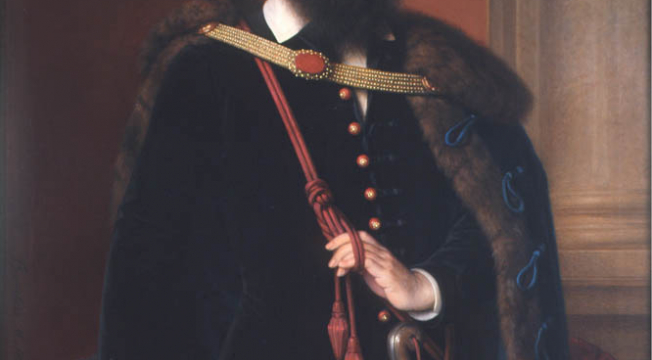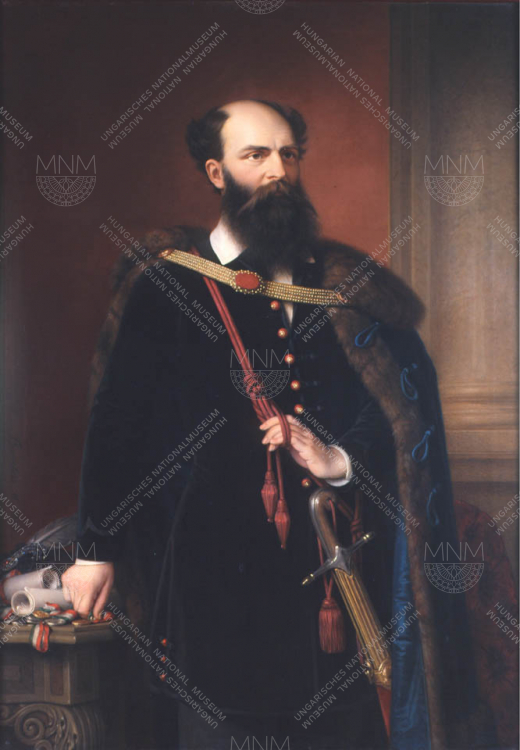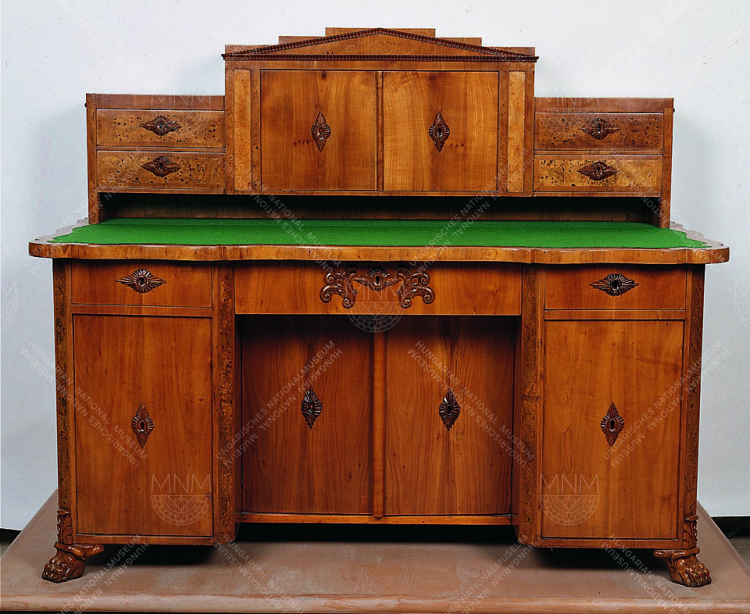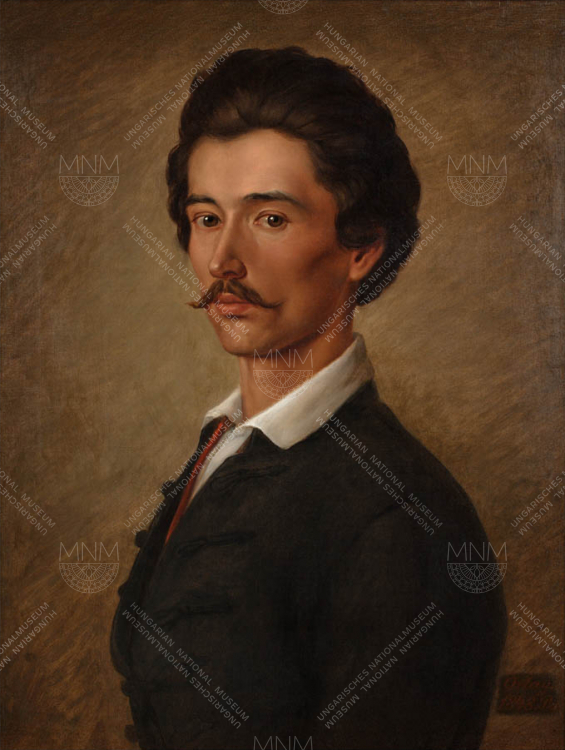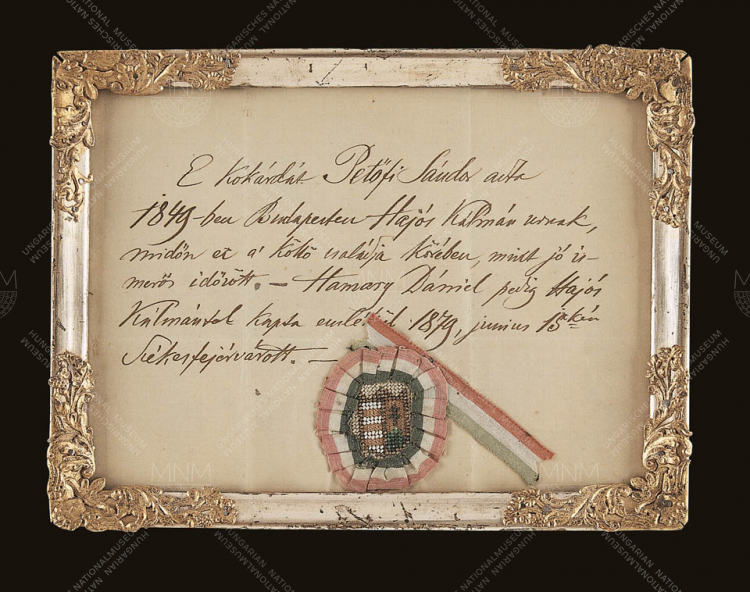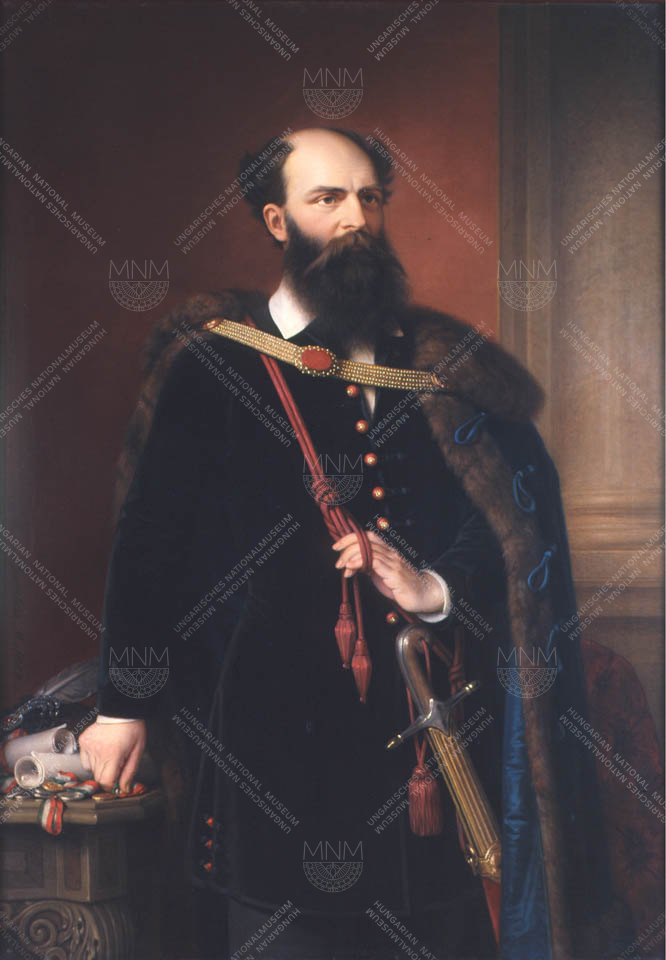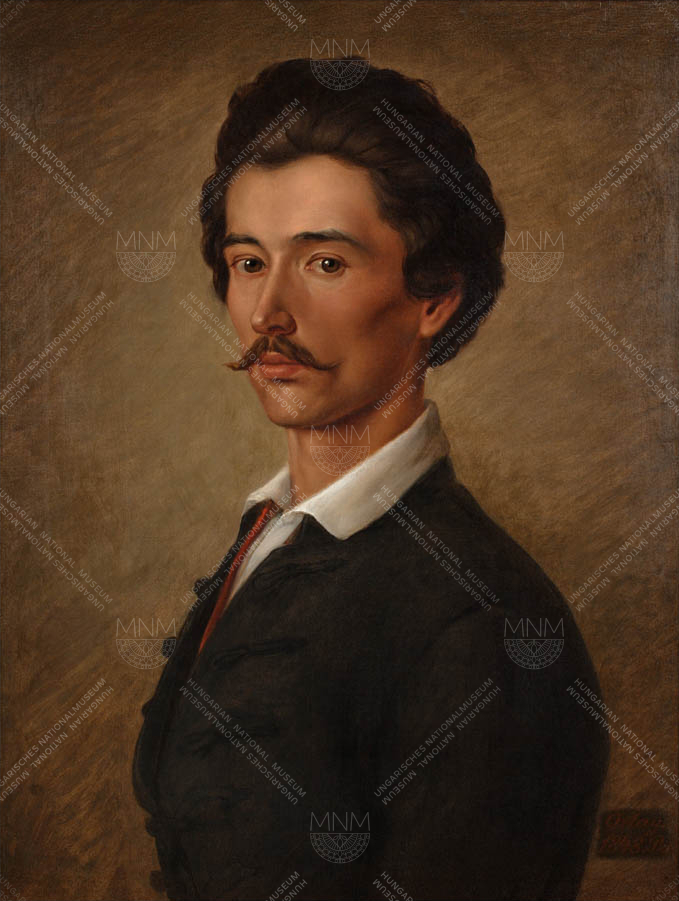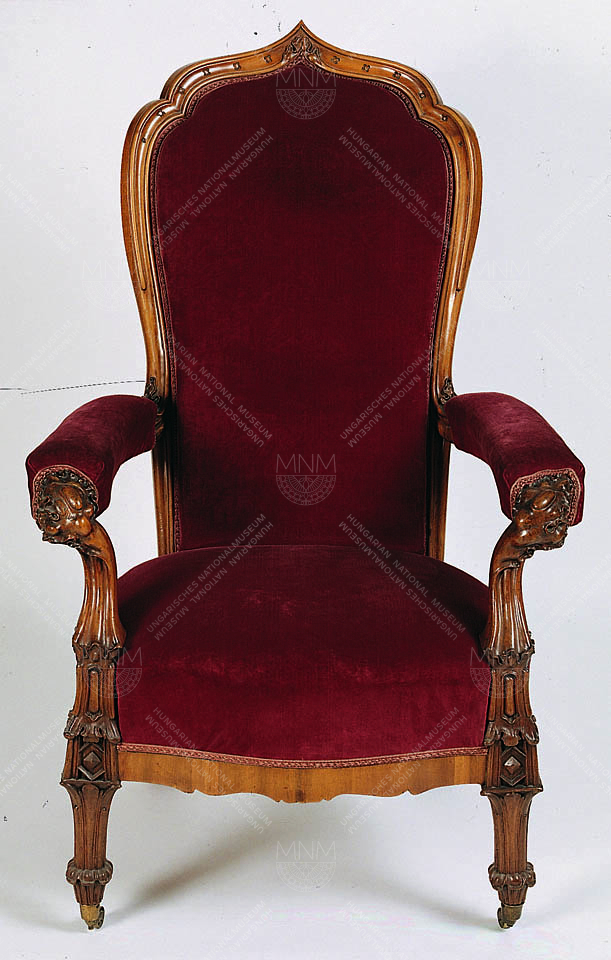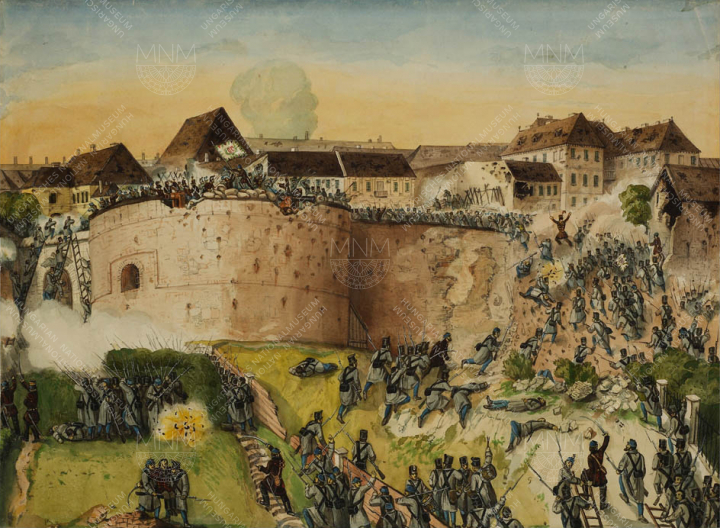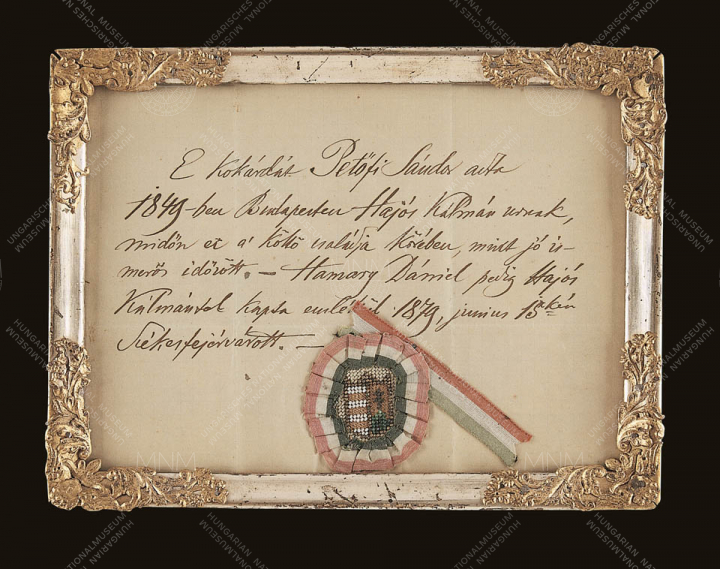
Room 12
The printing press refers to press freedom, one of the most important achievements of the 1848 revolution. Above it are placed the Twelve Points, namely the demands of the revolutionaries. The pictures and the velvet-upholstered ministerial chairs recall the members of the first responsible Hungarian government formed following efforts on the political level. Governor-President Kossuth’s ceremonial attire, weapons used by the Hungarian army, and personal effects of the Hungarian generals all refer to the War of Independence of 1848–49.
Interesting facts:
General Artúr Görgey, invested with full powers at the age of 31, was shortsighted. He studied army maps with a magnifying glass attached to his sabre; this weapon can be seen in the exhibition.
ʻKossuth notes’ were banknotes much prized after the defeat of the War of Independence. Notes in some of the denominations were not backed by gold or silver, the first banknotes not redeemable in precious metal.







